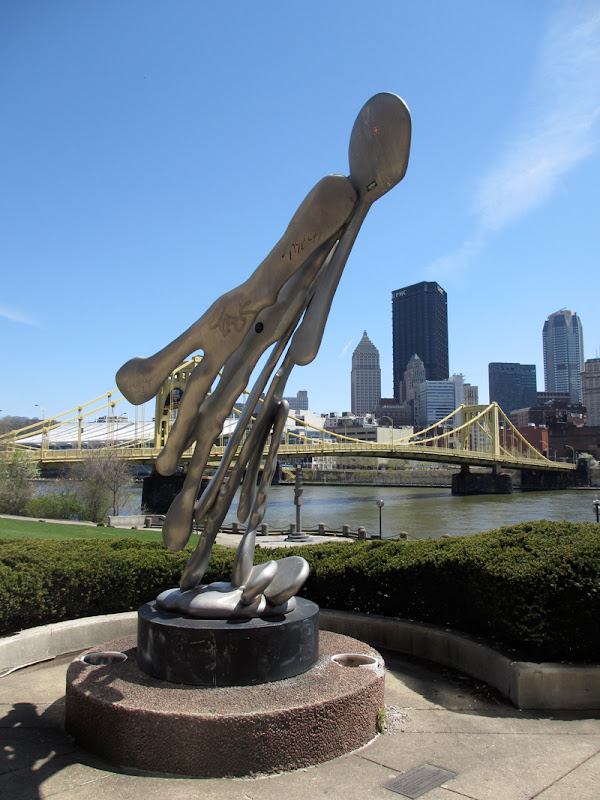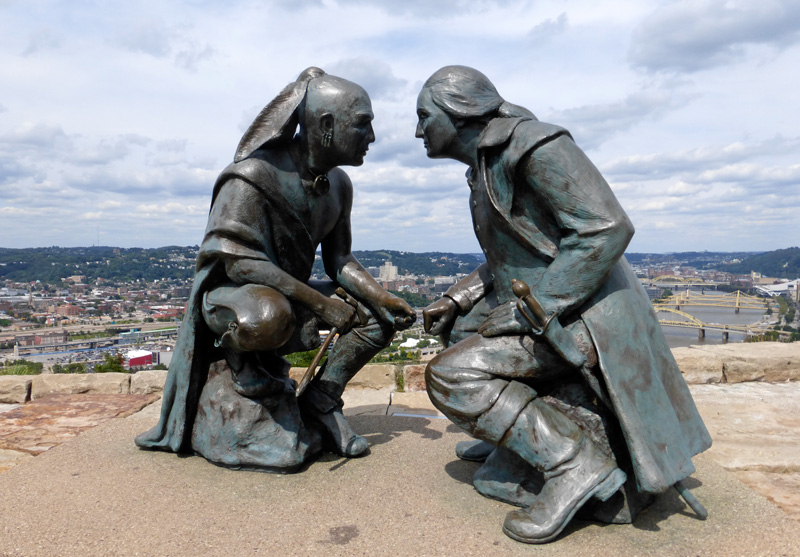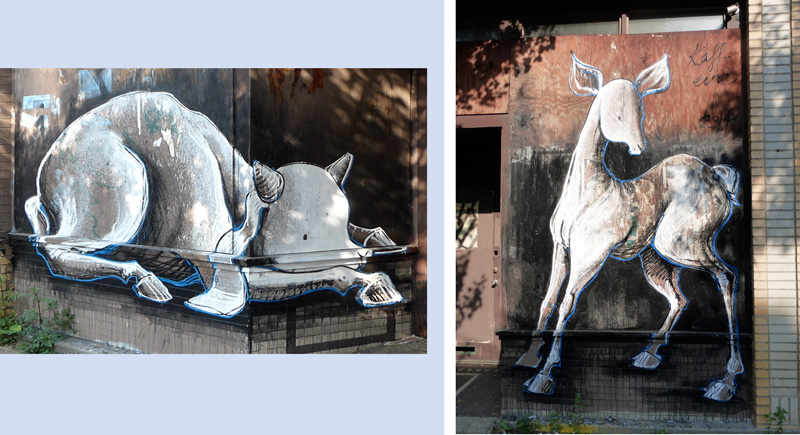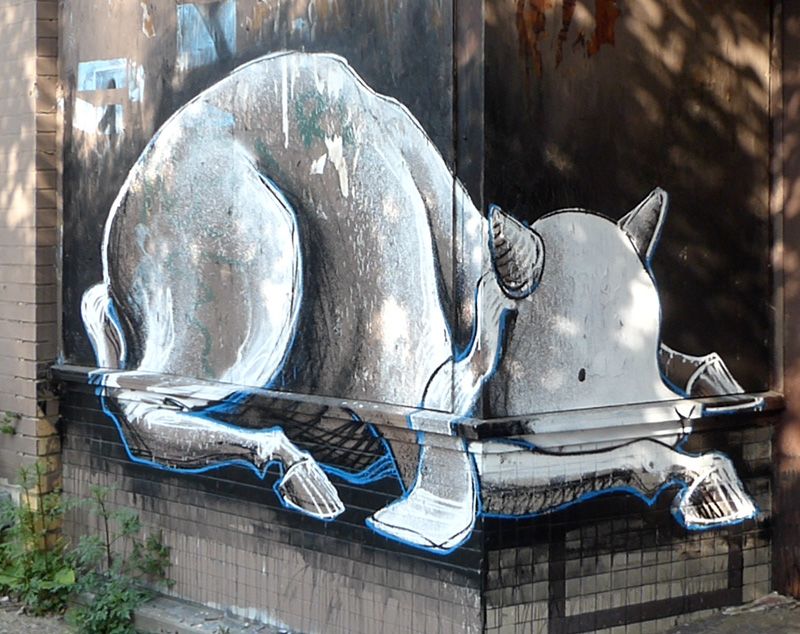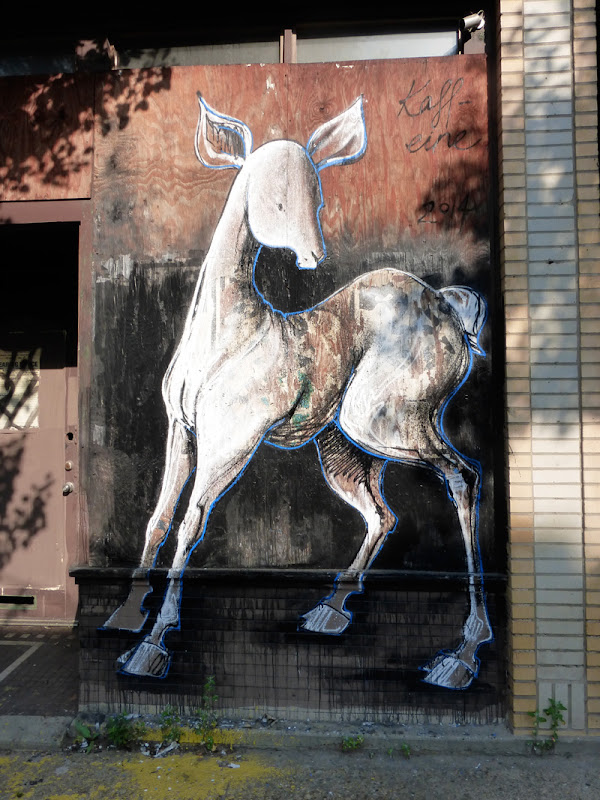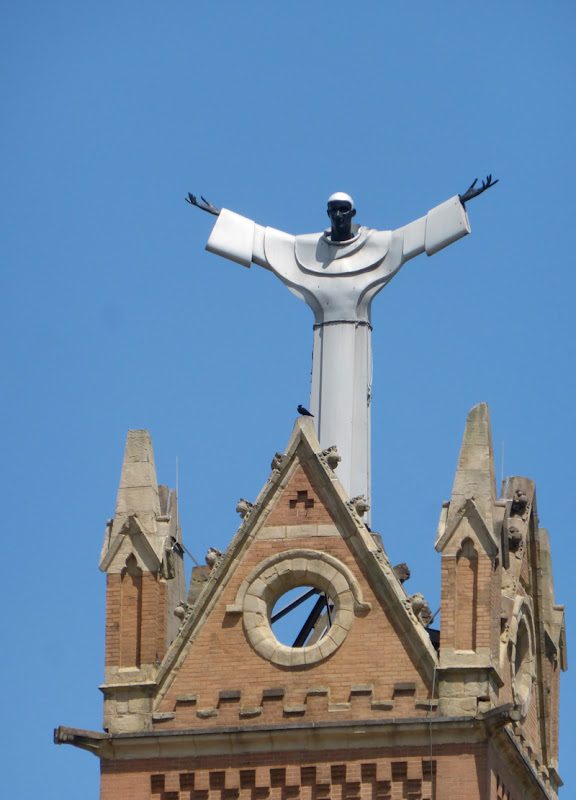Spreadsheet of Pittsburgh Public Art and blog archives
Map of Pittsburgh Public Art
Cara and Adam Jette, members of The South Side Slopes Neighborhood Association, saw photos of some step art projects around the world and realized that they had the makings of a step art gallery in their back yard. All of the staircases peppering the Southside Slopes were blank canvases with all sorts of fun possibilities. After months of research, planning, fundraising, and collaboration with local artist Laura Jean McLaughlin, phase one of this master plan became reality.
Oakley St was chosen to be the first stairway for the artistic transformation (with the hope of doing more in the future). Before anything else could be done, the steps needed some TLC. Cara and Adam did the legwork and arranged for the city to make repairs so there would be a good foundation for the artwork.
Laura Jean McLaughlin met with the committee, the community, and the volunteers to create a design that incorporated the ideas of everyone that wanted to help. The first creative session started with everyone doing some art exercises, stimulating the creativity of the group. Then everyone was asked to contribute words or short phrases about the neighborhood.
Once the list was done, each participant was tasked with selecting three or four items from the list to put together an idea for a design. Some of the resulting proposals were very imaginative and fun! They ranged from a poem comprised using only words on the list, to a wide range of images. Many of them included elements from the history of the neighborhood. Some included images of places and things prevalent in the community today. Others creatively blended the words and ideas into eclectic images. In the end Laura Jean McLaughlin took all of the suggestions, all of the words and ideas offered, and produced two designs for the group to chose from. When the designs were presented at the following meeting the group was thrilled. The winning design was selected and a few tweaks were proposed.
From that point, Ms McLaughlin needed to create the full scale design, divide it into 77 horizontal segments, and calculate the amount of each color of tile that would be needed. It would take months to get the tile because the only manufacturer of a frost-proof tile able to endure our climate is in Italy.
The sketch had to be modified somewhat because of the unusual perspective the steps would create. Standing at the bottom and looking up would require some adjustments. Laura Jean tried to compensate for the viewing angle and the fact that each step would most likely obstruct a slice of the step above it until the viewer moved far enough back. There would still be some issues because of the landings in the long staircase, but as the viewer climbs the steps they can easily see the image unfold. One of the modifications Ms McLaughlin made was the elongated neck on the woman. As you walk up the steps it's noticeable, but from the bottom the image looks proportional.
While Ms McLaughlin worked out all of the artistic details, the committee worked on raising sufficient funds. They applied for grants, held fundraising events, and used a crowd funding website to get the donations they needed.
Once the tiles arrived, it was time to gather the volunteers together and teach them how to create the mosaic. Laura Jean McLaughlin manufactured 77 boards, each covered with the design for one of the risers on it. That was overlaid with a strip of mesh for attaching the tiles.
The volunteers were shown how to break the tile using tile nippers and attach the pieces to the mesh with just enough adhesive to hold them in place.
As the installation began, interested started to grow. Pedestrians, cyclists and motorists all paused to admire the work. Many stopped to ask about it and take some pictures. Soon we noticed photos popping up on social media and the response was very positive.
We stopped by while Laura Jean worked with an assistant to install the panels. At this point, she hadn't titled the mural, but she told us the woman in it was Darla. That much she was sure of, but the title was still being elusive. A few days later, as the installation continued, it came to Laura Jean and South Side Schlumpy Funk was named.
To install the mural, each strip of mesh with the tile attached was carefully cut from the wood. Another board was placed on top of the panel and the entire piece flipped upside down. Thin set mortar was then applied to the back of the tile as well as the step riser, and then the tile panel was pressed into place.
This was a pretty big project and there were a few hurdles along the way. First were the administrative hoops to jump through - getting city approval for the project; getting the art commission to ok the design; getting the steps repaired. Then there was the fundraising. This project was only possible because Laura Jean McLaughlin cut her fee to the bone. She was that excited to take this on. Thanks to her and to all the people that contributed to the Go Fund Me campaign, plus all the volunteers that worked on it - we have a really cool set of stairs in the city now.
There were a lot of volunteers that stepped up and contributed. Too many to list here. More than 40 different people showed up for the meetings and helped break and glue tiles into place. Of course there were a few college students that almost ruined it all when they took one of the steps home to work on and never returned it. Ms McLaughlin had to re-create the design for that step and Cara and Adam came through in the crunch to fill it with tiles while the other steps were being installed.
There were high hopes of having it all installed in time for Step Trek 2016, but the weather didn't cooperate. Several days of rain put things on hold and the mural was only half finished by then. It was worth the wait though. The finished mural is fun, unique, colorful and an amazing accomplishment. The community really pulled together to make this happen. Laura Jean McLaughlin not only wowed us with the design, but did a great job of leading all the volunteers through the process of bringing it to life.
Because of the location of the staircase, there was no way for us to get a good photo without the street sign obstructing part of it. Here are some close ups as you walk up the steps:



















